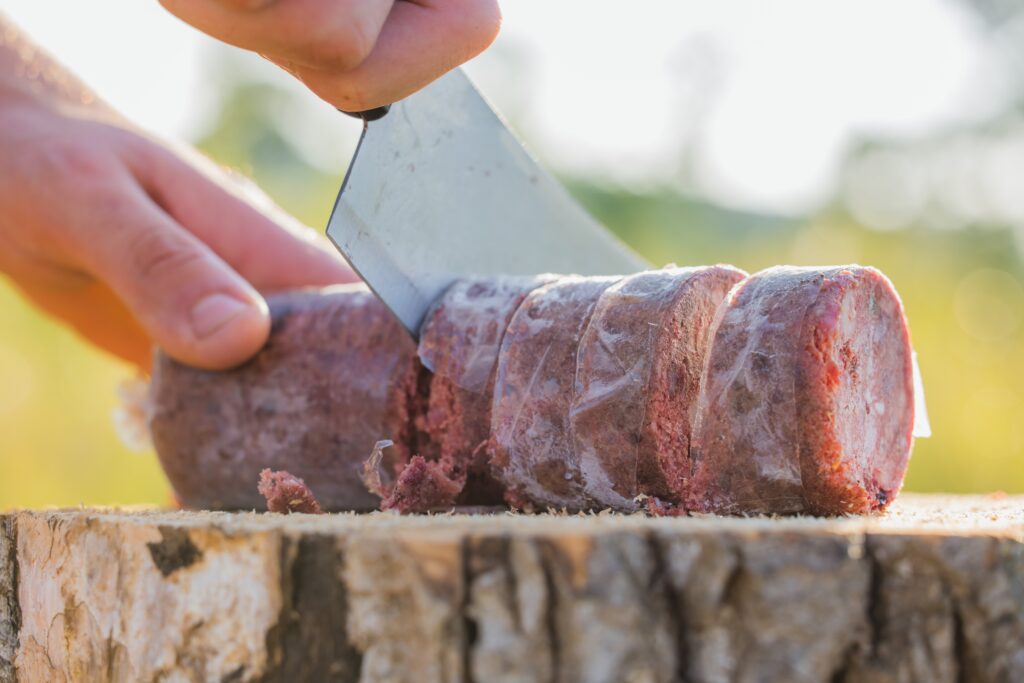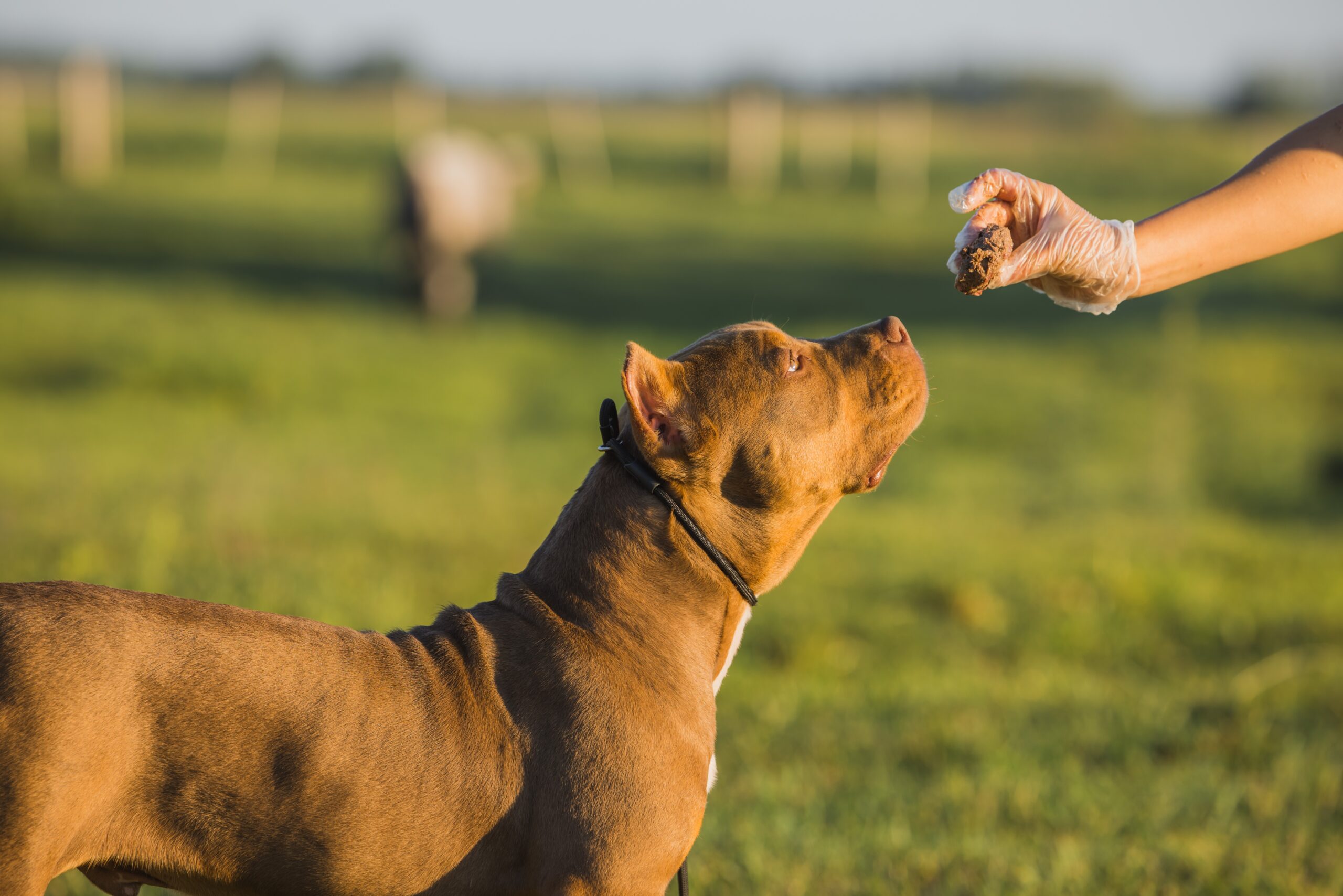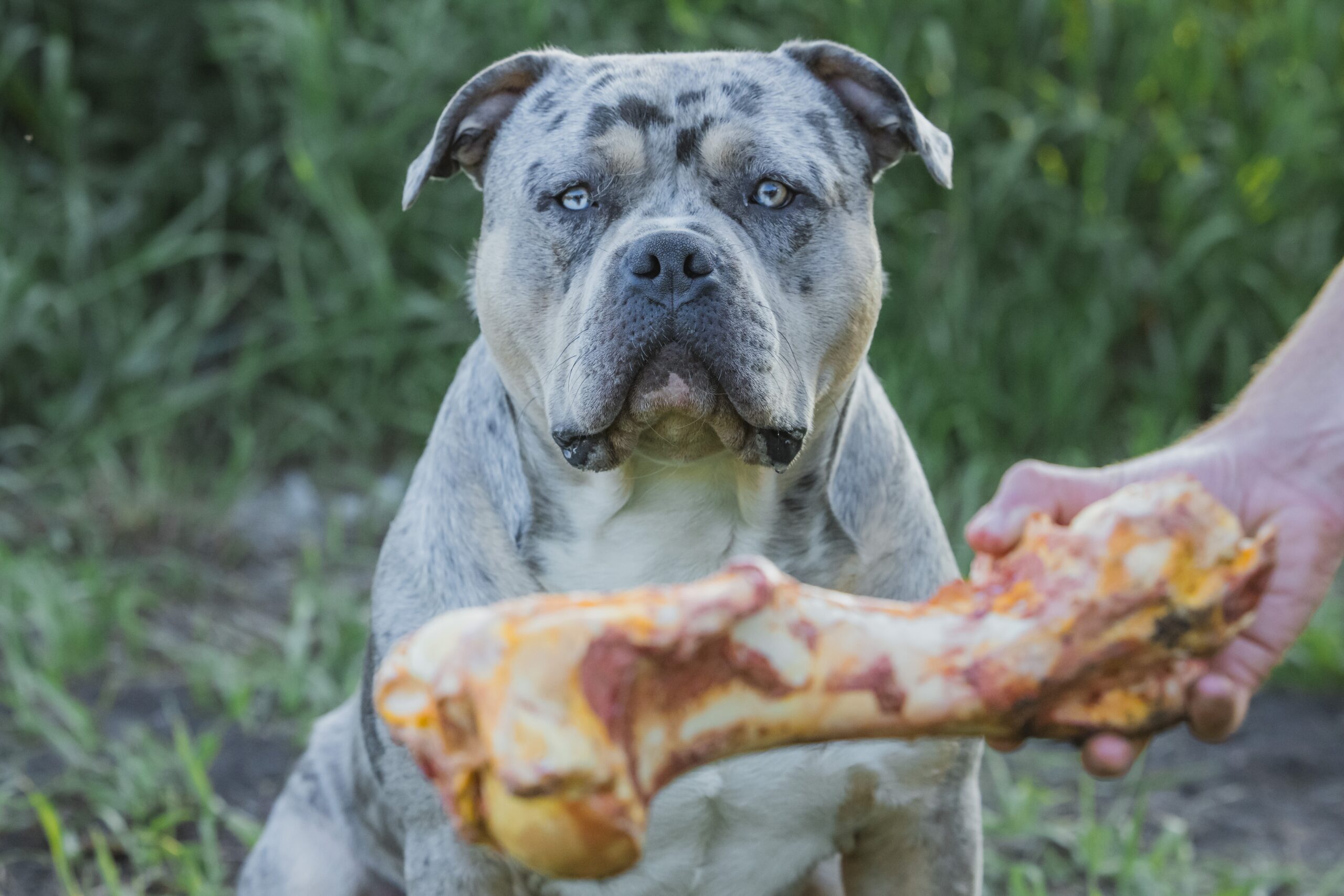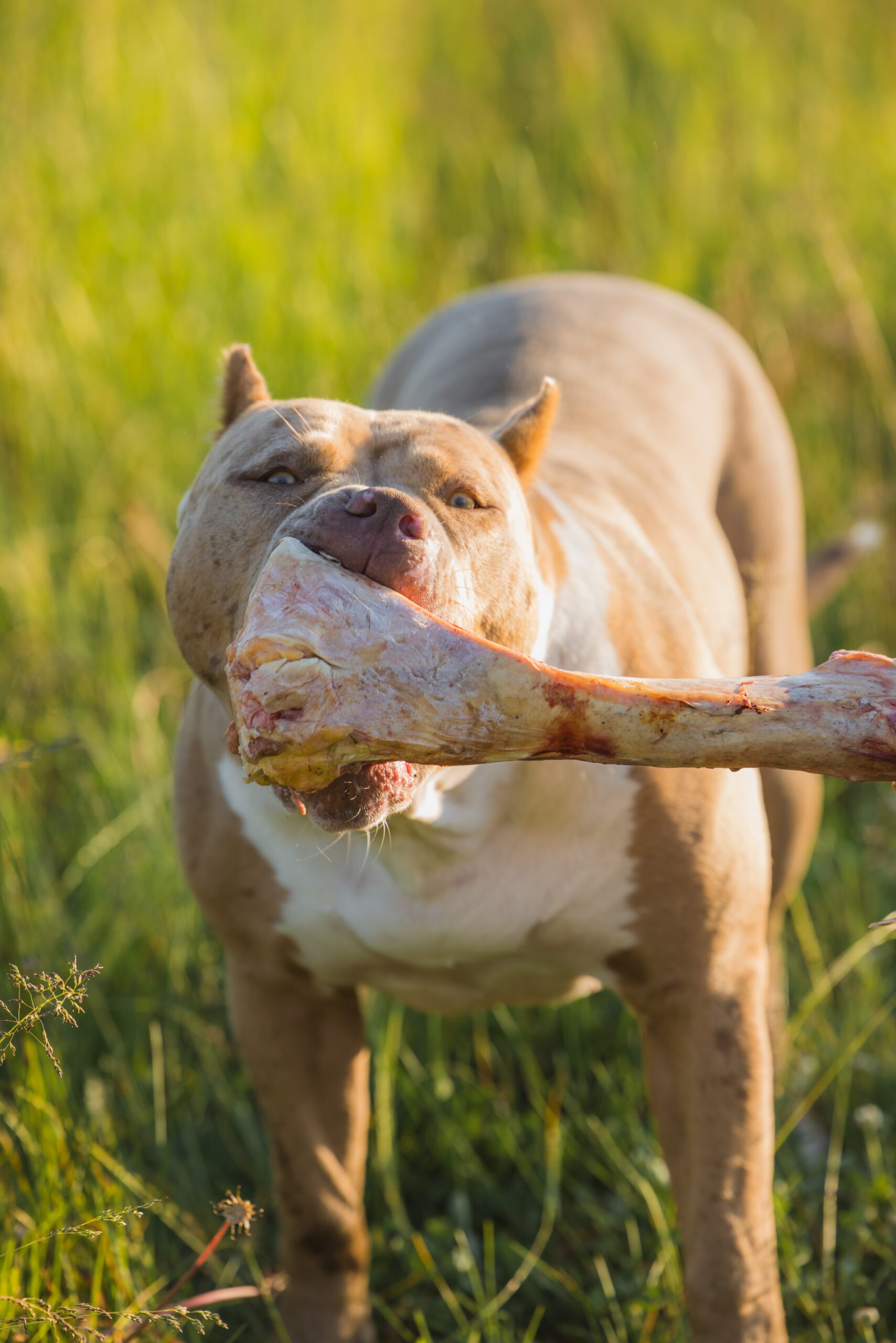I AM NEW TO RAW
We’re happy you’re considering changing your pet’s diet to raw or trying something different. Giving your pet a species appropriate diet that mimics what your pet would naturally eat is great for their health. We’ve tackled some commonly asked questions below.
which proteins should i feed my pet and how often?
It’s crucial to incorporate a diverse range of proteins into your pet’s diet as each offers distinct nutritional compositions. Restricting your pet to a single protein not only leads to dietary monotony but also deprives them of the unique benefits provided by other protein sources. Variations in protein, vitamins, minerals, and fatty acid content necessitate a balanced intake. We advise regularly including lean proteins such as chicken and turkey, supplemented by richer options like beef, tripe, salmon, or bison every 2 to 3 weeks. Additionally, integrating raw meaty bones and dehydrated treats is advantageous as they promote dental health and sustain the activity of jaw muscles.


what your dog's stool says about their health
Analyzing your pet’s stool is like reading a story about their health. For pets on a raw diet, healthy stool is brown, easy to pass, moist but firm, and has a mild smell. If there’s too much bone in the raw diet, the stool turns white, becomes hard and chalky, and is difficult to pass. Pets eating kibble have larger, softer, smellier stool that is easier to pass. The color of your pet’s stool can tell you a lot: for example, yellow mucus may mean a food intolerance, especially after changing their diet.

Benefits of feeding raw
Dogs are natural carnivores, with bodies adapted to digest and thrive on a diet primarily consisting of meat. Their teeth are designed for tearing and chewing meat, and their digestive systems are optimized to extract nutrients efficiently from animal protein. Feeding dogs a raw diet that mirrors their ancestral eating habits can offer numerous benefits. Raw diets provide essential nutrients in a natural and unprocessed form, preserving the integrity of vitamins, minerals, and enzymes that may be lost in processed dog food. Raw feeding supports healthy skin, coat, and overall vitality due to the high-quality protein and beneficial fats found in raw meat. Additionally, chewing on raw bones helps maintain dental health by reducing plaque and tartar buildup. Switching to a raw diet can address common issues like allergies, digestive problems, and obesity in dogs, promoting optimal health and wellness. Embracing a raw feeding approach honors dogs’ carnivorous nature and provides them with a diet that is biologically appropriate and nutritionally superior, offering a pathway to a healthier and happier life for our canine companions.
Raw Dog Food Calculator
Are you ready to switch your dog to a raw diet? Enter your dog's weight and pick the most appropriate lifestage to find out how much raw dog food your Canine companion is going to need.
Split daily feeding recommendation into your preferred number of meals per day for your dog.
Carnivore calculator
Our raw feeding calculator is a useful tool to help determine the right amount of food for your pet each day. Keep in mind, though, that every pet is different and their needs may vary based on several factors.
To ensure your pet is getting the right amount of food, closely monitor their health and weight and adjust their portions as needed. More active pets may need more food to maintain their energy, while less active pets might require fewer calories to stay healthy.
It’s also important to consider your pet’s eating habits. If they don’t finish their meal in one go, try splitting their food into multiple servings throughout the day. This approach can help your pet get all the necessary nutrients without overeating.
The main goal is to help your pet maintain a healthy weight and receive the proper nutrition. By using our raw feeding calculator as a guideline and observing your pet’s health and eating patterns, you can ensure they are getting the right amount of food for their unique needs.
Safety Precautions
- Never give your pet cooked bones, as they can splinter and cause injury. Instead, choose raw bones that are safe and easily digestible.
- Steer clear of weight-bearing bones, large animal knuckle bones, and vertebrae, as these can be excessively dense and might cause dental damage to your pet.
- Refrain from feeding grains and other carbohydrates, as they are not a natural part of a canine’s diet and can be hard to digest.
- Additionally, avoid meat from animals treated with antibiotics or hormones. Our meats are hormone-free, antibiotic-free, and pasture-raised to ensure the best health for your pet.
- Throw away any raw pet food left out at room temperature for over two hours to prevent harmful bacteria growth.
- Clean all surfaces, utensils, and hands that have touched raw pet food to avoid spreading bacteria.
- Always wash your hands before, during, and after preparing any food, and after handling raw meat, poultry, seafood, or eggs.
- Raw food can carry salmonella and E. coli, which can infect humans, so cleaning your pet’s bowl is crucial to preventing infections.

